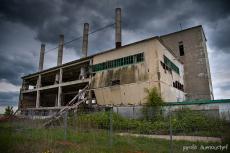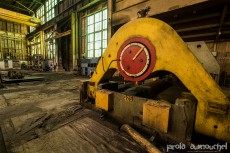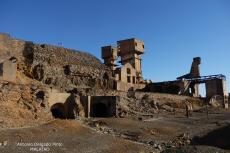So you might think the old Conveyor dock's tower straight out of the fourteenth century, but you're wrong. The pier on which it is located was built in 1956-1957 and was one of the last marine works at the port of Montreal before it does change...
The abandoned cement factory of Los Santos
The Badajoz plan
When I was a kid, I often traveled with my parents and my brothers in Los Santos, the village where I was born. Each time when we approached, my father used to say: "Beware, I will give a penny to the first one who will see the smoke of the plant." That was until 1973 before the closure of the factory, ie, seventeen years after its inauguration.
The sole purpose of its creation in 1956 was to provide cement to all work to improve the region's infrastructure such as dams, roads, construction of dozens of new villages. This project was called the Badajoz plan.
This factory employed over four hundred workers and has produced over two hundred thousand tons of cement per year. Nevertheless, the factory has been closed in 1973. It is now abandoned, since 40 years.
Related content
Update (2013-08-23) : Many thanks to those who sent me some information about this place. So, it seems like this building was used to heat other buildings of the military complex who is now abandoned.
It is rather unusual that I can not...
More than a century of expertise in the construction of mega steel structure that represents hundreds of projects from coast to coast. The company's story began in 1879 in Toronto, where a group of businessmen sniff a bargain following the...
Located in São Domingos (province of Alentejo) south of Lisbon, capital of Portugal, the mine of Achada do Gamo is an abandoned open pit mine. Located in the heart of the Iberian Pyrite Belt, which extends from southern Portugal to Spain, the...



















